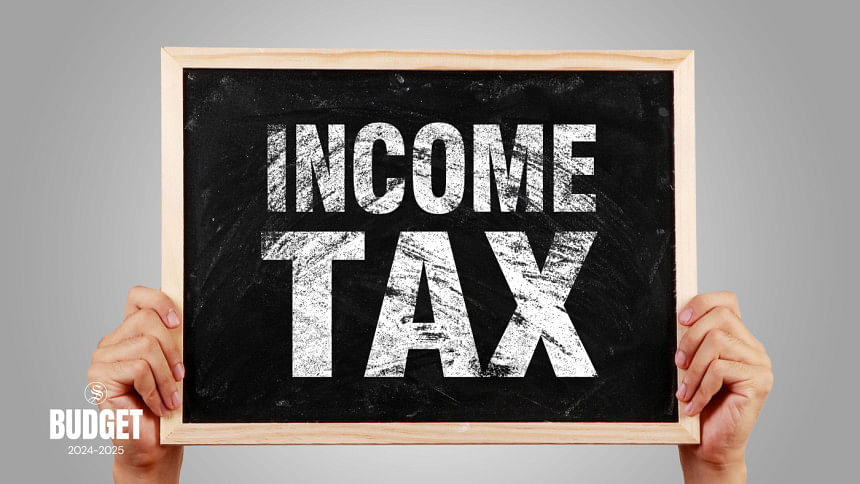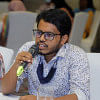Top earners face 30% tax again as inequality rises

After five years, the income tax rate for the highest bracket is likely to revert to 30 percent in the upcoming fiscal year as part of the government's efforts to address growing inequality — an issue that is among the country's major economic concerns.
According to the white paper on the state of the economy that was penned following the political changeover in August last year, the Gini coefficient, a way of measuring inequality, increased from 0.48 in 2016 to 0.499 in 2022 for income inequality in Bangladesh.
Finance ministry sources said that the top income tax rate would be raised by five percent to 30 percent for the upcoming fiscal year after a similar decision was foiled in the current fiscal year.
Although the then government said the move would "ease the tax burden", according to the amended Finance Act, it had to backtrack from its plan to increase the rate for the highest earners to 30 percent in FY25 amid pressure from various stakeholders.
Now it is returning to that idea, meaning the highest tax rate will be applicable on annual incomes of more than Tk 38.50 lakh.
The move is likely to be taken five years after FY21, when the government gave some relief to people following the Covid-19 pandemic and lowered the rate from 30 percent to 25 percent.
Since then, the Personal Income Tax (PIT) rates have also remained unchanged.
Finance Adviser Salehuddin Ahmed may announce the tax rate while placing the national budget for the next fiscal year on June 2.
As part of its prospective tax rate measures, the government announced the tax rates for two years — FY25 and FY26 — for the first time last fiscal year.
Currently, the NBR collects individual income tax under five brackets.
Beyond the annual tax-free income threshold of Tk 3.5 lakh, rates are structured as follows: 5 percent on income up to Tk 4.5 lakh, 10 percent on income up to Tk 8.5 lakh, 15 percent on income up to Tk 13.5 lakh, 20 percent on income up to Tk 18.5 lakh, and 25 percent on income exceeding Tk 18.5 lakh.
The government is planning to raise the tax-free income threshold to Tk 3.75 lakh, according to a finance ministry official. In addition, other rates may also be rescheduled.
Minimum tax set at Tk 5,000; New taxpayers pay only Tk 1,000
The interim government is likely to set a flat minimum income tax of Tk 5,000 for all individual taxpayers, regardless of their location.
This would mean that individuals in city corporations, municipalities, and rural areas alike may be subject to the same minimum tax rate.
Currently, the minimum tax stands at Tk 5,000 for residents of Dhaka North, Dhaka South, and Chattogram City Corporation areas; Tk 4,000 in other city corporation areas; and Tk 3,000 in municipal and rural areas outside city corporations.
The last revision to region-based minimum tax rates was made in the FY16 budget.
Besides, new taxpayers, meaning those who enrol for the first time, will have to pay only Tk 1,000 as minimum tax in the first year, according to sources.
Snehasish Barua, managing director of SMAC Advisory Services, believes the tax-free income threshold should be raised to at least Tk 4.5 lakh.
"That would ease the burden on marginal taxpayers and people want to comply and contribute competitively. India, for example, raised its tax-free threshold significantly without lowering tax rates," he said.
Barua added that although the government may announce a prospective tax rate for the next two years, raising the minimum threshold by just Tk 25,000 will offer little relief amid high inflation for those with fixed incomes.
Inflation has been hovering above nine percent since March of 2023, significantly reducing real incomes.
"We need to focus on easing the burden for low-income individuals. Offering them some relief while expanding the tax base would be a very positive step," Barua said.
As for the highest tax rate, he said, "One of the government's key objectives is to reduce the corporate tax rate while increasing the personal tax rate.
"The idea is that greater corporatisation will lead to improved governance and transparency. This aligns with broader government policy."
Currently, the corporate tax rate is 25 percent and the personal tax rate is 30 percent, meaning there is a 5 percent gap. Additionally, companies are not required to pay a surcharge like individuals. With a 10 percent surcharge, the effective tax rate becomes 33 percent, and with a 30 percent surcharge, it jumps to 40 percent.
"As a result, high-net-worth individuals face a significantly higher tax burden.
"If we subject them to such high taxes, capital formation becomes difficult. In that case, we must revisit the principle — there should be a rational gap between corporate and personal tax rates," he argued.
"The personal income tax rate should be slightly reduced. Lowering it to 25 percent, with surcharges intact, would result in an effective rate of around 27–28 percent, or even 32–33 percent in practice, which seems more reasonable," Barua added.
On the other hand, Mohammed Humayun Kabir, vice-president of the South Asian Federation of Accountants, said the highest tax slab would work to reduce income inequality.
However, he urged reducing the effective tax rate on individuals.

 For all latest news, follow The Daily Star's Google News channel.
For all latest news, follow The Daily Star's Google News channel. 



Comments